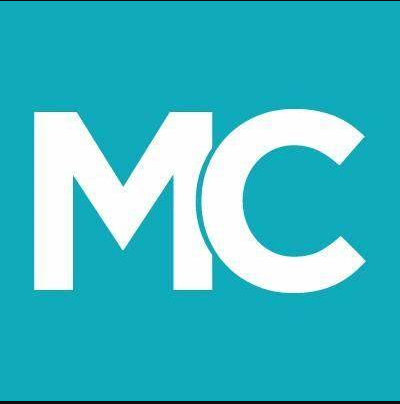React vs React Native
 Hoza Mc.Ferdinand
Hoza Mc.Ferdinand
The TechSavvy will receive a commission if you purchase anything through this link. So, please! do so to support us.
Get your tech items, back-to-school essentials, house furniture, computer, and car replacement parts at the lowest prices here.
According to StackOverflow, Javascript has been the most used language in the world since 2013. It is used by hundreds of companies and by almost every single web developer. The problem here is, developing features with Javascript alone can be quite technical. But one way to make it easier is by using libraries and Frameworks and undoubtedly two of the most popular Javascript Frameworks are React and React Native.
React or ReactJS is a Javascript library used to develop User Interfaces for both websites and applications using a component-based architecture. On the other hand, React Native is a Framework used for building native apps for both Android and IOS. Instagram and Facebook are examples of apps built using React Native.
KEY DIFFERENCES BETWEEN REACTJS AND REACT NATIVE
Now, there's a reason they both have similar names. React Native was based on React but they both perform very different functions. Let's dive deeper into how these two frameworks differ from each other.
The main difference between them is that ReactJS is used to create UI for web applications while React Native is used to build cross-platform mobile applications for IOS, Android, and Windows.
Another difference between them is that ReactJs is used to build Front-end features only while React Native is used for both front-end and backend development.
FEATURES OF REACT AND REACT NATIVE
Let's take a look at the features of React and React Native so you can better understand the difference between them.
REACTJS
- VIRTUAL DOM: DOM or Document Object Model acts as the Interface between Javascript and the web browser and what it enables you to do is to Create modify and delete HTML elements using Javascript code. In React JS, the original DOM is replaced by a Virtual DOM. So basically whenever the app is modified or updated, the entire UI is rendered again by the virtual DOM. This Improves User Experience and Stability
2. One-way Data Binding: React uses the flow of data that is Unidirectional, forcing developers to use the callback feature to edit components. This is achieved by using a JS app architecture called Flux. This affords developers better control over the app and makes it easier to maintain.
3. Declarative UI: This is a way of programming the UI so it is updated only when the state of the UI changes. It is different from Imperative where you need to check whether the UI has to be updated based on multiple conditions which is highly inefficient.
4. Component-Based Architecture: Here every UI item is broken down into components and those components can further be broken down into sub-components. For Example, the Google home page can be divided into the Search bar, the URL slot, the Google logo, etc.. and the search bar can further be divided into the search text, the microphone logo, and so on. This approach breaks UI development into smaller units which makes development easier. These components can also be reused which saves a lot of time.
REACT NATIVE
1. Cross-Platform development: It enables developers to write the same code for both IOS and Android.
2. Native Components: Even though it is cross-platform it comes with a set of Native components like view, text, and Image that map directly to the platform's Native UI building blocks.
3**. Flux Architecture:** If you plan to use React Native for app development then you will need to use the Flux Pattern to manage how the data flows through your application. Basically, the flux pattern is a way of developing UI using React and React Native.
PROS AND CONS OF REACT AND REACT NATIVE
Advantages of using React
The component-based architecture makes it possible to reuse components which saves a lot of time.
SEO friendliness since Google won't have to use Javascript to render the website's components making the process of rendering less strenuous and by so doing increasing the ranking of your website.
Due to the popularity of Javascript and React, there are thousands of free online resources that can be used to learn the framework which makes learning React very easy.
Disadvantages of using React
Too many Extra technologies: Before starting to work with React there are a lot of add-ons that must be installed and some of them may be poorly supported.
Lack of Documentation: This might sound contradictory to what was said earlier but no, learning the React framework only, is very easy but due to the rapid development of React and the various technologies that surround it, It becomes more challenging to create enough documentation and tutorials to learn all of these new technologies.
Development pace: This problem also arouses due to the rapid development of React and its technologies. There are a lot of third-party programs that need to be used when working with React and you will have to spend a lot of time learning how these technologies work which can slow down development considerably.
Advantages of using React Native
It facilitates the Job of Developers by eliminating the need to write code multiple times for different platforms.
React Native apps perform better than other cross-platform apps due to the fact that it uses Native components.
Saves time and cost since there is no need to hire different teams to handle development for each platform.
Disadvantages of Using React Native
Implementing Complex UI with React Native can be difficult.
React Native apps require a lot of Memory Management.
React Native apps are not as secure as Native apps because it uses a lot of third-party. programs that make it difficult to identify errors and loopholes during development.
Comparing React and React Native is not right since they have very different functions. If you are trying to decide which one to learn or use, well, it depends on the kind of application you want to build. If you are trying to build a mobile app, You will obviously choose React Native but if you just want a Framework for front-end development, then ReactJS is your best option.
Subscribe to my newsletter
Read articles from Hoza Mc.Ferdinand directly inside your inbox. Subscribe to the newsletter, and don't miss out.
Written by

Hoza Mc.Ferdinand
Hoza Mc.Ferdinand
Writer, Student, and Part-time game developer with a huge passion for tech and self-development.